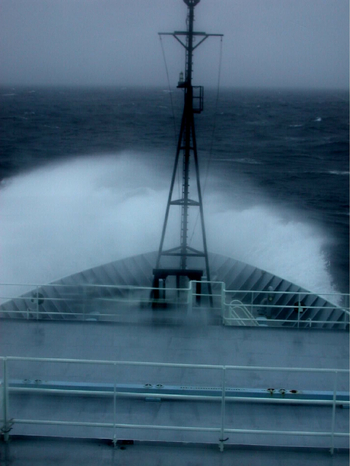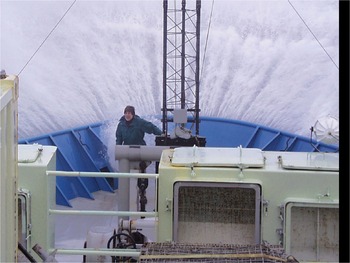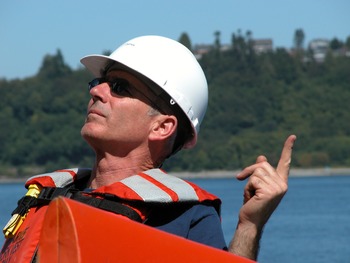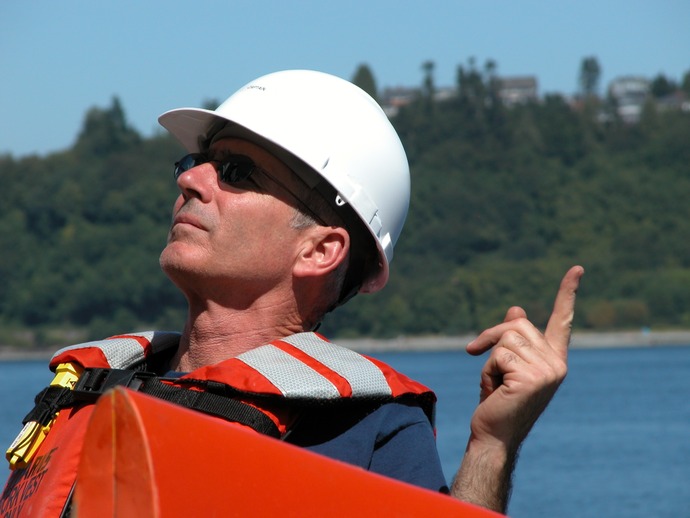The weather at sea plays a critical part in determining when we can and cannot do science. Generally, when the wind approaches 30 knots, careful consideration must be made to determine if it is safe to deploy equipment. In addition to present weather conditions, it is important to know the weather trend to ensure that equipment that is already deployed can be recovered safely. The wind is not the direct issue, but seas, created by wind, are the problem. Important then, is to predict the wind. In the not-too-distant past, the primary means of collecting weather data was via radio-fax charts. These charts show isobars, lines of equal barometric pressure. The closer the lines are to each other, the greater the pressure differential, and the greater the wind. Reading the chart and then deciding what’s going to happen next are where experience is helpful.
Today, with the Internet, these charts are more readily available and easier to receive. There is also a wide variety of weather web sites to choose from, depending on one’s location. Now, in addition to forecasting, deciding which sources to use can be an art in itself. The ship takes weather observations to track and compare current conditions with weather reports and forecasts. Our goal is to monitor the weather, using all of our resources, to determine if it is safe to conduct science, and to predict bad weather to determine if the science schedule might need to be adjusted. We have been very fortunate on this voyage so far, as the weather has been favorable for conducting science operations. The challenge now is to not become complacent, but to keep watching out for the weather that will eventually come. I am often asked, “Will the weather get worse?” Yes.
Capt. John




